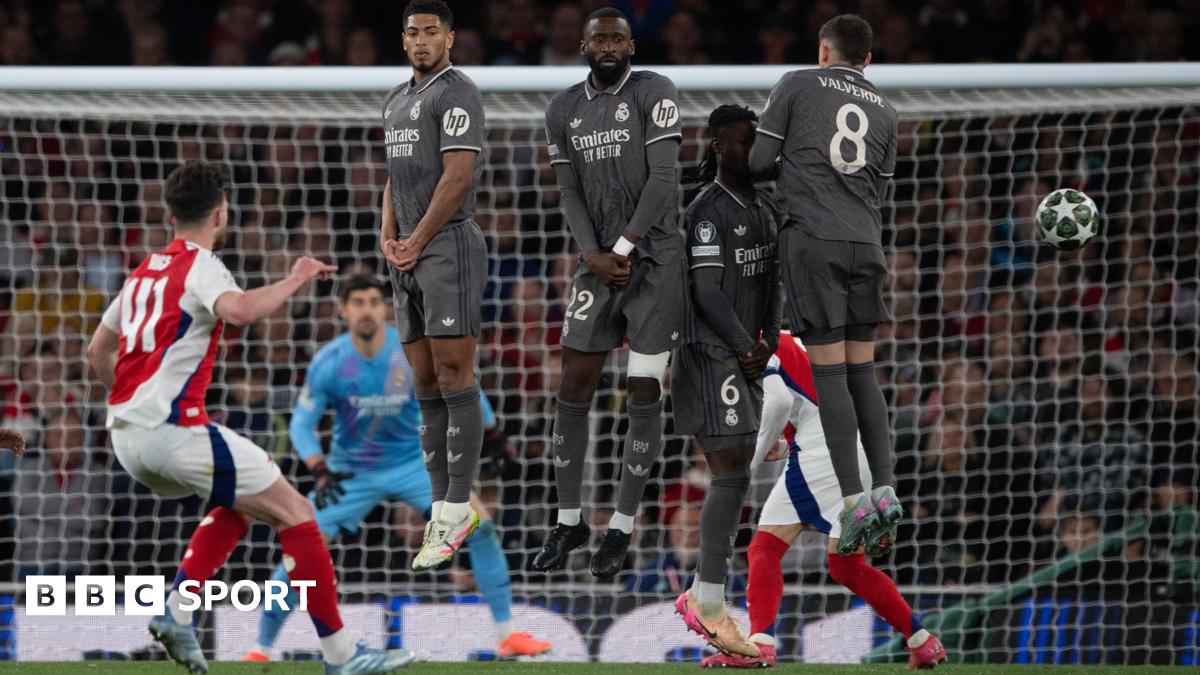Arsenal News and Match Analysis

Declan Rice's stunning free-kick double against Real Madrid in the Champions League has ignited debate and admiration. The Arsenal midfielder's two goals, a key factor in their 3-0 victory, not only showcased his individual brilliance but also highlighted a broader trend in football: the diminishing art of the direct free-kick.
The Improbable Becomes Reality
Rice, who had never previously scored from a direct free-kick in his career, defied the odds not once, but twice, in the same match. According to Opta's expected goals (xG) model, the probability of him scoring both free-kicks was a mere 0.23%, or a one-in-435 chance. The first goal, a curler around the wall, had an xG of 0.037 (3.7%), while the second, a bending strike into the top corner, had an xG of 0.063 (6.3%).
Which Was the Better Goal?
Former West Ham and England goalkeeper Rob Green, present at the Emirates for CBS, declared the second free-kick the superior of the two. "It was the definition of a perfect free-kick," Green stated. He emphasized the difficulty of the shot, noting that even against a world-class goalkeeper like Thibaut Courtois, the placement and power were simply unstoppable. Green recounted how his old goalkeeper coach at West Ham, Ludek Miklosko, referred to that top corner as 'the spiders' web', while in Brazil, it's known as 'where the owls sleep'.
According to the xG Philosophy on X, Rice’s second free-kick had an expected shot on target of 0.97, meaning a goalkeeper would be expected to save it only 3% of the time. Green, however, remained adamant that both free-kicks were impossible to save, even for a goalkeeper of Courtois' stature.
The Wall and Other Defending Tactics
While Rice bent his first free-kick around Real Madrid's wall, Green suggested that defending such a shot effectively would require an impractical setup, potentially involving three players positioned outside the post. As for the second free-kick, Green noted Arsenal's clever tactic of positioning their own players in front of the Real Madrid wall, obstructing Courtois' view. However, he ultimately concluded that the quality of the strike rendered any defensive strategy futile.
The Rise of Rice and the Decline of the Free-Kick?
Normally, Bukayo Saka or Martin Odegaard would take Arsenal's free kicks. Green believes that the distance of the free-kicks were a factor in Rice taking them, arguing that Saka and Odegaard would not have been able to hit them with the same power. Rice's Champions League goals mark a rare feat, making him only the fifth player to score two direct free-kick goals in a Champions League match.
Despite these moments of brilliance, statistics reveal a worrying trend: the decline of direct free-kick goals in both the Premier League and the Champions League. The use of a 'draught excluder' (a player lying behind the wall) and more conservative goalkeeping strategies contribute to this decline. The 'draught excluder' prevents the ball from going underneath the wall, and goalkeepers take confidence in having a giant wall protecting one side of the goal, so they stand still for a lot longer and they don't feel they have to gamble as much.
Arsenal's Victory: A Sign of Things to Come?
Former Manchester City defender Nedum Onuoha spoke about the game, saying that the 3-0 result was incredible, and that Arsenal's performance was vindication for Mikel Arteta and the players, who have always believed that they can compete. He also spoke about the importance of having a manager like Arteta, who never gets too high or too low with his team, and who has instilled an undying belief that they can beat anybody.
Regardless of the overall decrease in free kick goals, Rice's goals are a testament to his ability and Arsenal's drive. Arsenal's dominant victory over Real Madrid, fueled by Rice's exceptional free-kicks, is a testament to their belief and Arteta's strategy. As the Champions League progresses, their journey promises to be one to remember.











